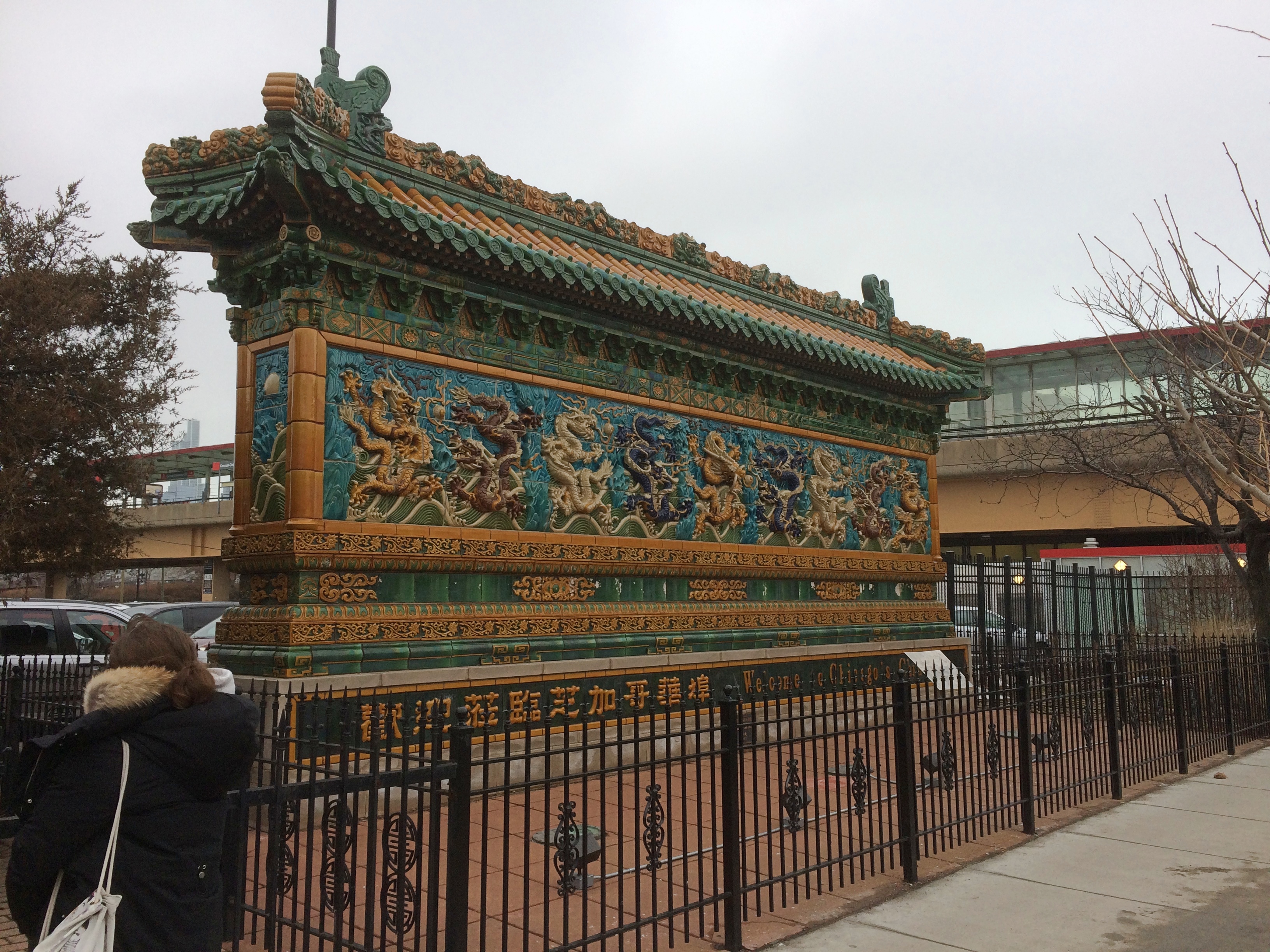One of these days, I might pop into the Dr. Sun Yat-Sen Museum on S. Wentworth Ave. in Chinatown. It has to count as one of the more obscure museums in metro Chicago, and that adds some interest right there.
 But when we went to Chinatown on Saturday, we took a pass on Sun Yat-Sen and had lunch next door instead, at a newish-looking place called Slurp-Slurp. Had some tasty noodle soups there.
But when we went to Chinatown on Saturday, we took a pass on Sun Yat-Sen and had lunch next door instead, at a newish-looking place called Slurp-Slurp. Had some tasty noodle soups there.
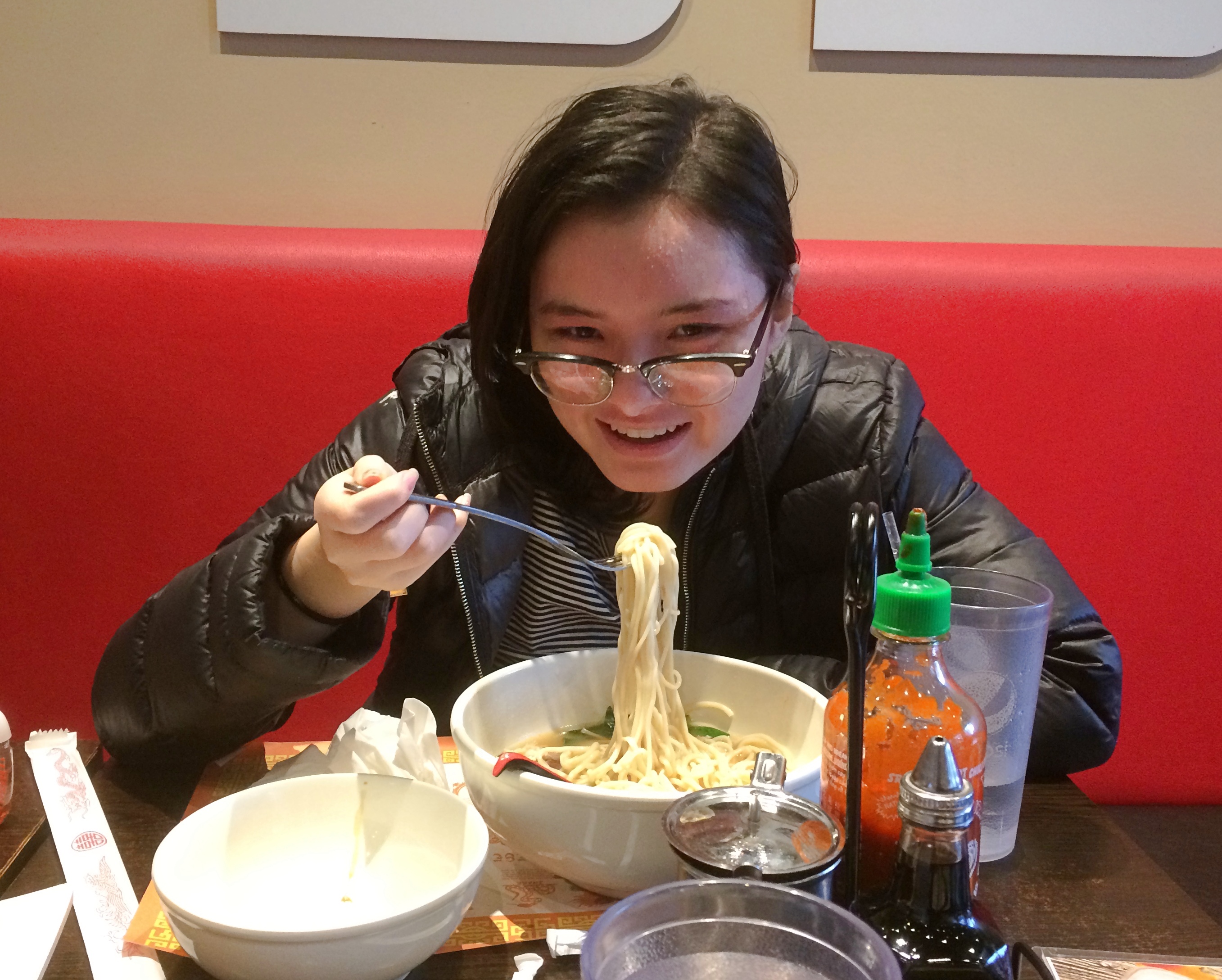 Chinatown wasn’t the main destination that day, but it was more-or-less on the way, and always a dependable place to find something good to eat, and things to see. Even if there isn’t a parade.
Chinatown wasn’t the main destination that day, but it was more-or-less on the way, and always a dependable place to find something good to eat, and things to see. Even if there isn’t a parade.
We arrived at the Cermak-Chinatown El Station and saw something fairly new, visible from the stairs leading to the ground.
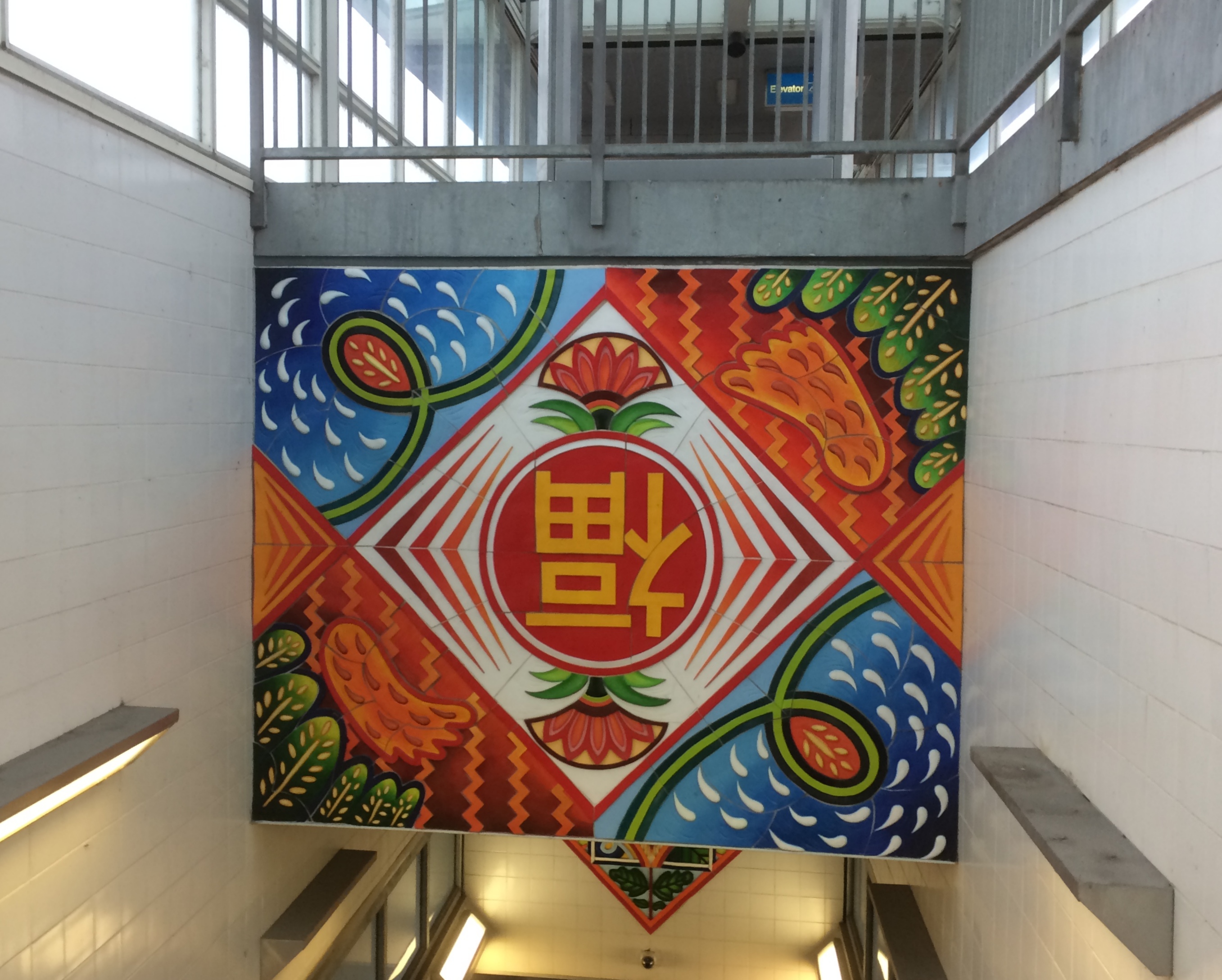 Done in hand-made ceramic tile by Indira Freitas Johnson, installed in 2015.
Done in hand-made ceramic tile by Indira Freitas Johnson, installed in 2015.
“The centerpiece of the upper panel features Fook (Fú in Mandarin), the symbol of good fortune or happiness,” the CTA says. “According to custom, the symbol is placed upside down and against a diamond-shaped background. Within the context of the stairway Fook (Fú) may be translated as ‘good fortune arrives.’ ”
Not far from the station is a screen wall.
It looks like there had once been a small sign in front of the wall to explain it, but that’s now completely blank. Not to worry, a very short amount of Googling tells me that it’s a Nine-Dragon Wall, a miniature version of such a wall in Beihai Park, Beijing (the Winter Palace).
Wiki tells us that there are various other walls of this style, including one at the Forbidden City that I have no recollection of seeing. Then again, it’s a large place. There’s also one at the Mississauga Chinese Centre in the Toronto suburb of that name.
Besides lunch, we did a short walk on Wentworth Ave., since the weather wasn’t too bad for the pit of winter. Not pit of winter-ish at all, with temps above freezing, though sometimes winds would kick up. Wentworth is the original hub of Chicago’s Chinatown.
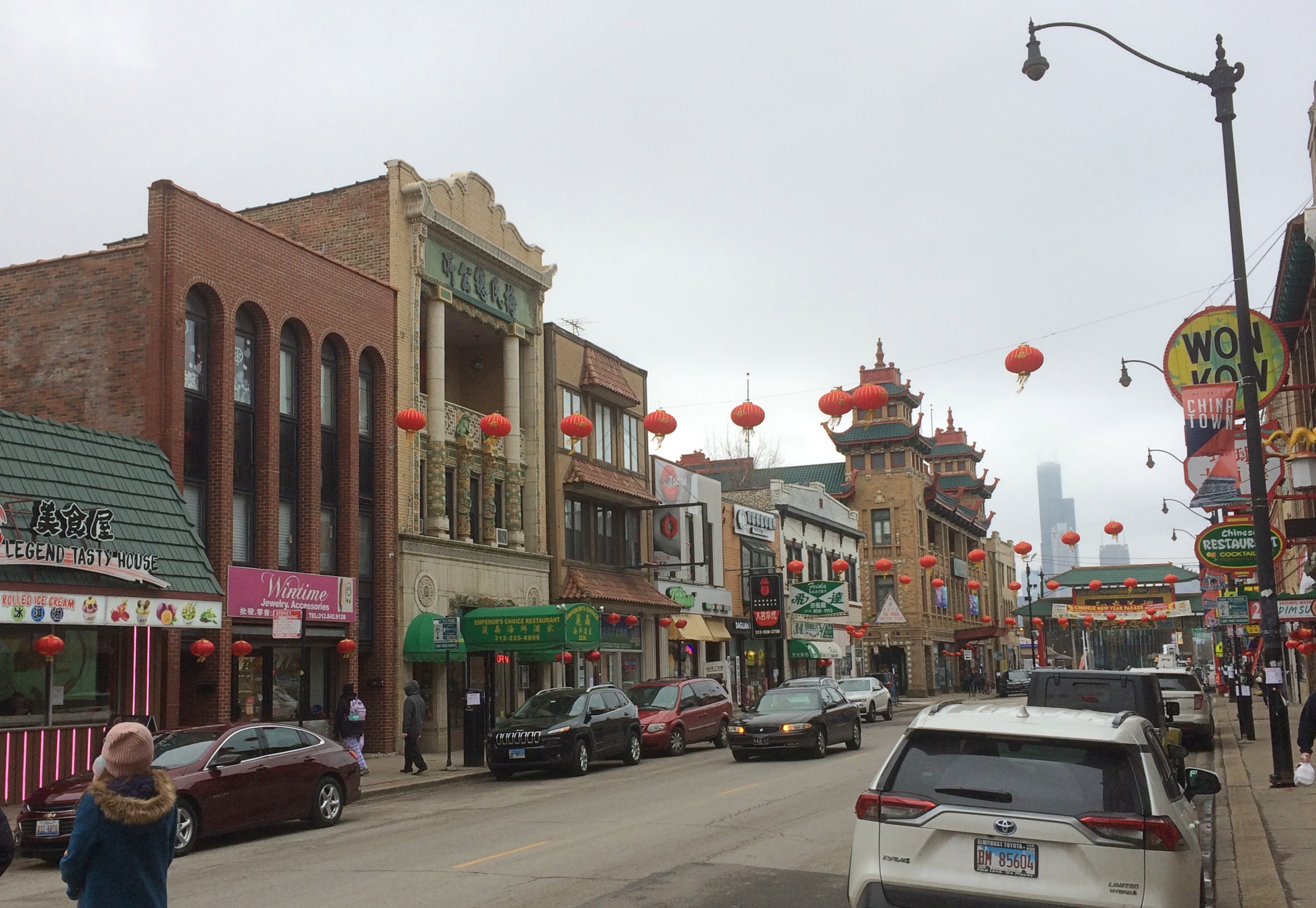

 There’s evidence of continuing cross-cultural pollination.
There’s evidence of continuing cross-cultural pollination.
About a half block off Wentworth is St. Therese Chinese Catholic Church. Unfortunately, the sanctuary was closed.
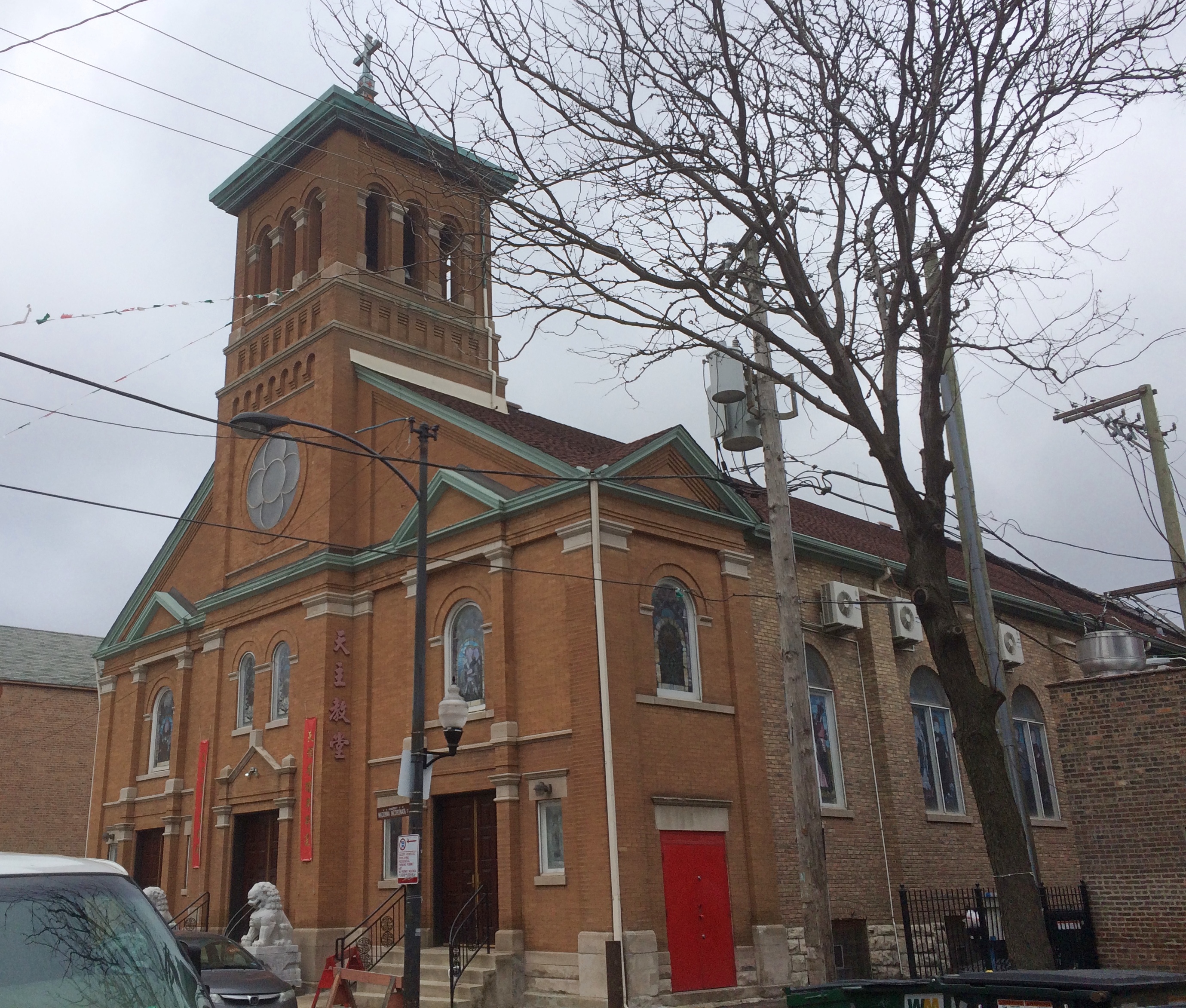 Some distinctive Chinese features are visible outside.
Some distinctive Chinese features are visible outside.
 Later I learned that the church had been built just after the turn of the 20th century as Santa Maria Incoronata, to serve an Italian congregation. By the 1960s, the demographics of the neighborhood had changed enough for it to become St. Therese, serving a Chinese congregation.
Later I learned that the church had been built just after the turn of the 20th century as Santa Maria Incoronata, to serve an Italian congregation. By the 1960s, the demographics of the neighborhood had changed enough for it to become St. Therese, serving a Chinese congregation.
